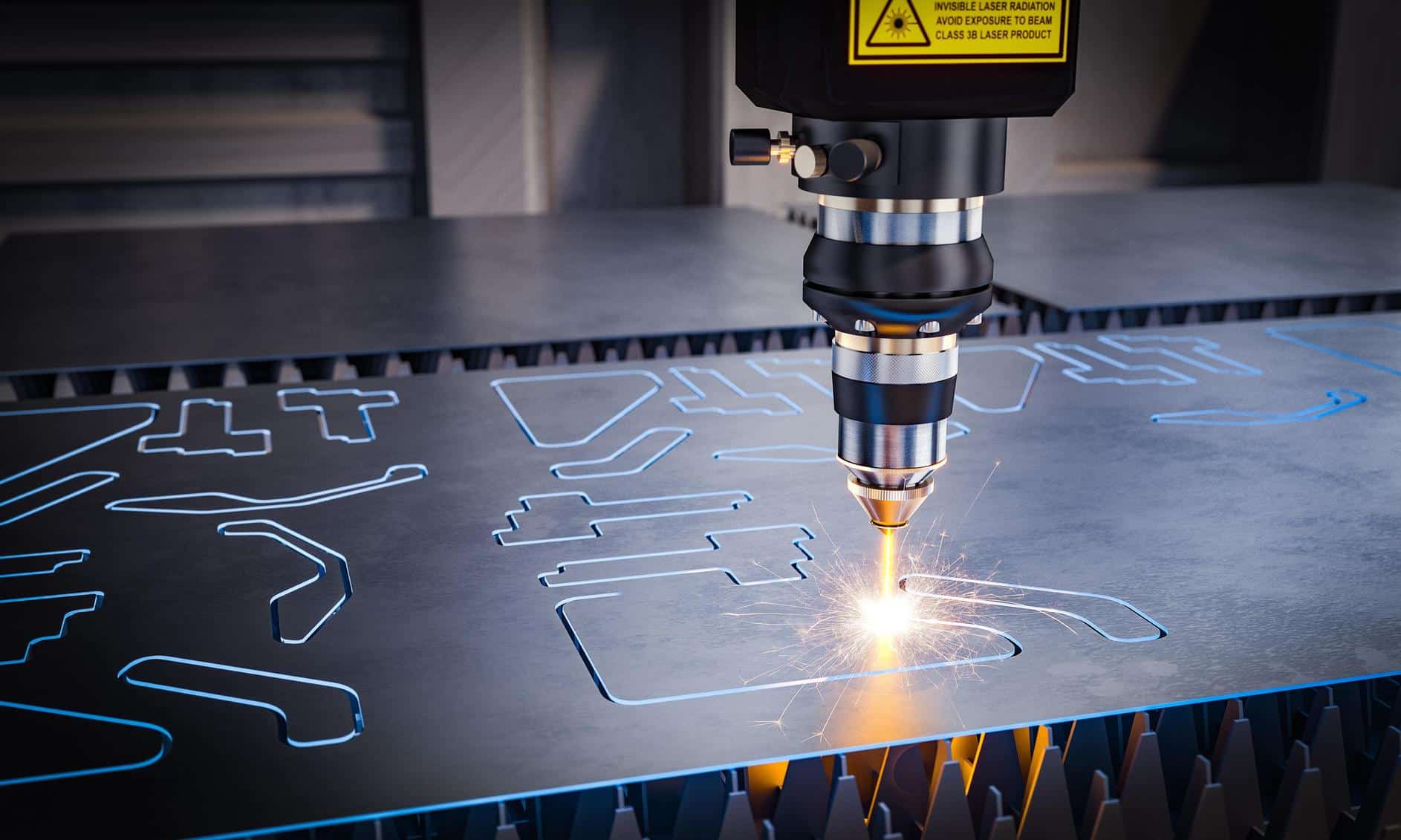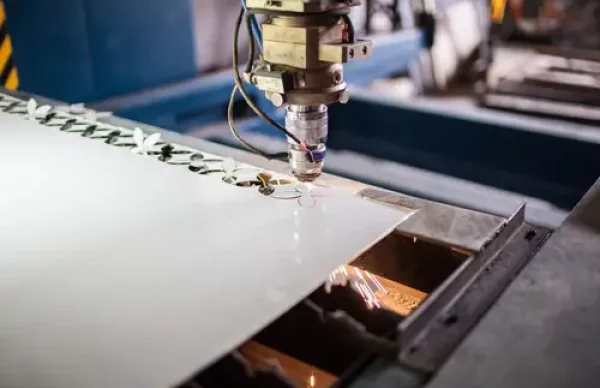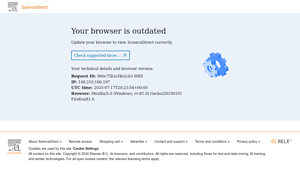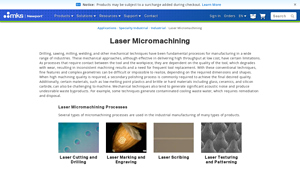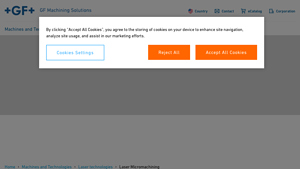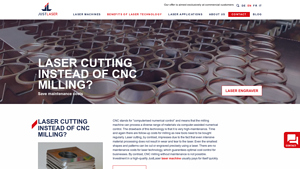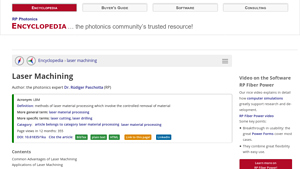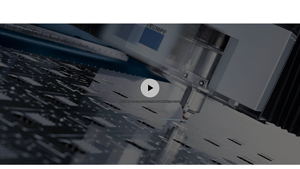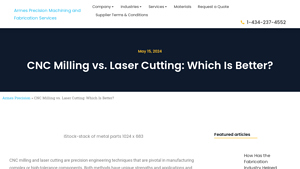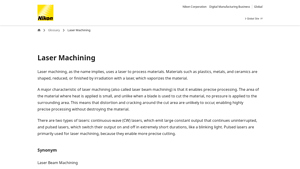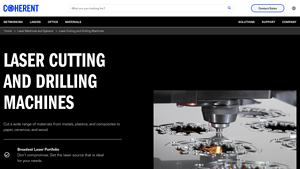Laser Milling Guide: Type, Cost, Top List…
Introduction: Navigating the Global Market for laser milling
In an increasingly competitive landscape, international B2B buyers face the critical challenge of sourcing advanced manufacturing technologies that meet their specific needs. Laser milling, a precision-driven process that utilizes focused laser energy for material removal, presents a compelling solution for companies seeking to enhance production efficiency and product quality. This guide offers an in-depth exploration of laser milling, covering various types, applications, and the latest innovations in the field. From micro-toolmaking to complex geometric machining, understanding the capabilities and limitations of laser milling can significantly influence your procurement strategy.
As you navigate the global market for laser milling, this comprehensive resource will empower you to make informed purchasing decisions. It includes essential insights on supplier vetting, cost considerations, and emerging trends that are reshaping the industry. Special attention is given to the unique needs and opportunities within regions such as Africa, South America, the Middle East, and Europe, including specific markets like Nigeria and Saudi Arabia. By leveraging the knowledge shared in this guide, B2B buyers can identify reliable suppliers, negotiate better deals, and ultimately enhance their operational performance through the strategic implementation of laser milling technologies.
Understanding laser milling Types and Variations
| Type Name | Key Distinguishing Features | Primary B2B Applications | Brief Pros & Cons for Buyers |
|---|---|---|---|
| Traditional Laser Milling | Utilizes continuous wave lasers for material removal. | Aerospace components, automotive parts | Pros: High precision; Cons: Slower processing speed. |
| Pulsed Laser Milling | Employs pulsed laser beams for ablation, allowing for finer detail. | Micro-toolmaking, medical devices | Pros: Excellent detail; Cons: Higher equipment costs. |
| Hybrid Laser Milling | Combines laser milling with traditional machining methods. | Complex parts in electronics, aerospace | Pros: Versatile; Cons: Requires skilled operators. |
| Ultrafast Laser Milling | Uses femtosecond laser pulses for minimal thermal impact. | Optical components, semiconductor fabrication | Pros: Minimal heat-affected zone; Cons: Expensive technology. |
| Laser Polishing | Similar to milling but focuses on surface finishing. | Semiconductor wafers, precision optics | Pros: Enhances surface quality; Cons: Limited to finishing tasks. |
What Are the Key Characteristics of Traditional Laser Milling?
Traditional laser milling is characterized by the use of continuous wave lasers that remove material in a controlled manner. This method is particularly suitable for producing parts with complex geometries, making it a popular choice in industries like aerospace and automotive. When considering this option, buyers should evaluate the trade-off between precision and processing speed, as traditional laser milling may not be as fast as other methods.
How Does Pulsed Laser Milling Differ in Terms of Detail and Application?
Pulsed laser milling is distinct for its ability to produce finer details through the use of short, high-intensity laser pulses. This technique is ideal for micro-toolmaking and medical device manufacturing, where precision is paramount. Buyers should consider the initial investment in pulsed laser technology, as it often comes with higher costs but offers significant advantages in detail and accuracy.
What Advantages Does Hybrid Laser Milling Offer for Complex Parts?
Hybrid laser milling integrates laser technology with traditional machining processes, allowing for the efficient production of complex parts. This method is particularly beneficial in the electronics and aerospace sectors, where intricate designs are common. However, it requires skilled operators familiar with both laser and traditional machining techniques. Buyers should assess their workforce capabilities when considering hybrid options.
Why Choose Ultrafast Laser Milling for Sensitive Applications?
Ultrafast laser milling employs femtosecond laser pulses, minimizing thermal impact on the workpiece. This technology is especially advantageous in the production of optical components and semiconductor devices, where precision and material integrity are critical. Despite its benefits, the cost of ultrafast laser milling equipment can be a significant consideration for buyers, necessitating a thorough cost-benefit analysis.
What Is the Role of Laser Polishing in Surface Finishing?
Laser polishing is a variation of laser milling that focuses on enhancing the surface finish of components. It is widely used in the semiconductor industry and for precision optics, where surface quality is essential. While laser polishing can significantly improve the final product’s quality, it is limited to finishing tasks and may require additional processes for material removal. Buyers should evaluate the specific needs of their applications to determine if laser polishing is a suitable option.
Key Industrial Applications of laser milling
| Industry/Sector | Specific Application of laser milling | Value/Benefit for the Business | Key Sourcing Considerations for this Application |
|---|---|---|---|
| Aerospace | Precision component manufacturing for aircraft parts | High accuracy and reduced weight of components | Certification of laser milling equipment and suppliers |
| Medical Devices | Fabrication of intricate surgical instruments and implants | Enhanced design flexibility and biocompatibility | Compliance with medical standards and material sourcing |
| Automotive | Production of lightweight parts and molds | Cost reduction through material efficiency | Availability of high-quality alloys and machining services |
| Electronics | Micro-toolmaking for circuit boards and semiconductor devices | Improved performance and miniaturization of components | Access to advanced laser technology and precision control |
| Energy Sector | Machining of turbine blades and components for power plants | Increased efficiency and longevity of energy equipment | Supplier reliability and technical support |
How is Laser Milling Transforming the Aerospace Industry?
In the aerospace sector, laser milling is utilized for the precision manufacturing of aircraft components, such as turbine blades and structural parts. This technology enables the production of lightweight components with complex geometries, essential for enhancing aircraft performance and fuel efficiency. International buyers, particularly from regions like Africa and the Middle East, should prioritize suppliers who can provide certified laser milling equipment and demonstrate compliance with stringent aerospace standards to ensure safety and reliability.
What Role Does Laser Milling Play in Medical Device Manufacturing?
In the medical device industry, laser milling is crucial for fabricating intricate surgical instruments and implants. This method allows for high precision and customization, which is vital for ensuring the functionality and safety of medical devices. Buyers in this sector must focus on sourcing materials that meet biocompatibility standards and work with suppliers who understand the regulatory requirements for medical devices, especially in Europe and South America.
How is Laser Milling Enhancing Automotive Production?
The automotive industry leverages laser milling for producing lightweight parts and molds, significantly reducing material waste and production costs. This technology supports the trend toward more fuel-efficient vehicles by enabling the creation of complex shapes that traditional machining methods cannot achieve. Buyers from regions like Nigeria and Saudi Arabia should consider the availability of high-quality alloys and the expertise of suppliers in providing tailored machining services to meet specific automotive requirements.
Why is Laser Milling Important for Electronics Manufacturing?
In electronics, laser milling is employed for micro-toolmaking, particularly in the production of circuit boards and semiconductor devices. This technology allows manufacturers to create smaller, more efficient components that improve overall device performance. Buyers in this industry should seek access to advanced laser technologies and ensure that suppliers can maintain precision control throughout the milling process, essential for meeting the fast-paced demands of the electronics market.
How Does Laser Milling Benefit the Energy Sector?
The energy sector utilizes laser milling for machining turbine blades and other critical components used in power plants. This process enhances the efficiency and durability of energy equipment, which is crucial for reducing operational costs and improving energy output. Businesses in this sector should prioritize supplier reliability and the availability of technical support to address the unique challenges associated with energy component manufacturing, particularly in regions undergoing energy transitions.
3 Common User Pain Points for ‘laser milling’ & Their Solutions
Scenario 1: Difficulty in Achieving Desired Surface Finish Quality
The Problem: Many B2B buyers face the challenge of achieving a high-quality surface finish when using laser milling for intricate parts. Industries such as aerospace, automotive, and electronics require components with precise tolerances and minimal surface roughness. Buyers often find that the inherent characteristics of laser milling can lead to varying degrees of surface roughness, necessitating additional finishing processes. This not only increases production time and costs but can also lead to delays in the supply chain, impacting customer satisfaction and competitiveness in the market.
The Solution: To overcome this challenge, buyers should invest in advanced laser milling systems equipped with adaptive control technologies that monitor and adjust parameters in real-time. Sourcing machines that offer variable laser pulse durations and beam profiles can significantly enhance surface finish quality. Additionally, implementing post-processing techniques such as laser polishing or ultrasonic cleaning can further refine the surface. Engaging with experienced suppliers to discuss specific application needs and conducting trials on different materials can provide valuable insights into optimizing processes for desired outcomes.
Scenario 2: High Production Costs Due to Inefficient Material Use
The Problem: A common pain point for manufacturers utilizing laser milling is the high cost associated with material wastage. Unlike traditional machining methods, laser milling can lead to excessive removal of material, particularly when not properly optimized. This inefficiency not only increases operational costs but also affects the overall profitability of projects, especially for businesses operating in competitive markets where cost-effectiveness is crucial.
The Solution: To mitigate material wastage, buyers should focus on selecting the right laser parameters and machining strategies. This involves a thorough understanding of the material properties and the specific requirements of the part being manufactured. Collaborating with laser milling experts to conduct simulations based on CAD models can help identify the most efficient tool paths and laser settings. Additionally, investing in software that allows for real-time monitoring and adjustments can enhance operational efficiency. Buyers should also consider using nesting software to optimize material layout on the workpiece, minimizing scrap and maximizing yield.
Scenario 3: Challenges in Scaling Up Production Volumes
The Problem: As demand for precision-engineered components increases, many B2B buyers struggle with scaling up production volumes using laser milling technology. The transition from prototype to mass production can be daunting, as laser milling processes may require more time per part compared to conventional methods. This bottleneck can hinder growth and prevent businesses from meeting market demands promptly.
The Solution: To address scaling challenges, it is essential to implement automation within the laser milling process. Buyers should explore options for integrating robotic systems that can handle part loading and unloading, thereby reducing downtime between operations. Additionally, investing in multi-axis laser milling machines can enhance production capabilities by allowing for the simultaneous processing of multiple parts. Engaging with suppliers to discuss high-throughput laser systems designed for mass production can also provide valuable insights. Finally, creating a robust workflow that includes regular maintenance schedules for laser equipment ensures that production remains consistent and efficient, minimizing unexpected downtime.
Strategic Material Selection Guide for laser milling
What Are the Key Properties of Common Materials Used in Laser Milling?
Laser milling is a precise manufacturing process that requires careful material selection to ensure optimal performance and efficiency. Below are analyses of four common materials used in laser milling, focusing on their properties, advantages and disadvantages, and considerations for international B2B buyers.
1. Aluminum Alloys
Key Properties: Aluminum alloys are lightweight with excellent thermal conductivity, making them ideal for applications requiring heat dissipation. They typically have good corrosion resistance and can withstand moderate temperatures.
Pros & Cons: The primary advantage of aluminum alloys is their low weight and ease of machining, which reduces manufacturing complexity. However, they can be more expensive than other materials and may not be suitable for high-stress applications due to lower tensile strength compared to steel.
Impact on Application: Aluminum’s compatibility with various media makes it suitable for industries like automotive and aerospace. However, its lower hardness means it may wear more quickly in abrasive environments.
Considerations for Buyers: Buyers from regions like Africa and the Middle East should consider local availability and compliance with standards such as ASTM. The preference for lightweight materials in automotive sectors is growing, making aluminum a strong candidate.
2. Stainless Steel
Key Properties: Stainless steel is known for its high corrosion resistance and ability to withstand high temperatures and pressures. It is also durable and has excellent mechanical properties.
Pros & Cons: The key advantage of stainless steel is its durability, making it suitable for a wide range of applications, including medical devices and food processing. However, it can be more challenging to machine and may incur higher costs due to its density and hardness.
Impact on Application: Stainless steel’s corrosion resistance makes it ideal for applications exposed to harsh environments or chemicals. Its strength is beneficial for structural components but may limit its use in micro-manufacturing due to increased machining complexity.
Considerations for Buyers: Compliance with international standards such as DIN and JIS is crucial for buyers, especially in Europe and South America. Buyers should also be aware of the specific grades of stainless steel that meet their industry requirements.
3. Ceramics
Key Properties: Ceramics are characterized by their high hardness, thermal stability, and excellent wear resistance. They can withstand high temperatures and are chemically inert.
Pros & Cons: The primary advantage of ceramics is their ability to maintain structural integrity under extreme conditions, making them ideal for high-performance applications. However, they are brittle and can be challenging to machine, leading to increased manufacturing complexity.
Impact on Application: Ceramics are often used in applications requiring high wear resistance, such as cutting tools and aerospace components. Their brittleness can limit their use in applications where impact resistance is necessary.
Considerations for Buyers: Buyers should consider the specific type of ceramic that meets their application needs and ensure compliance with relevant standards. In regions like Africa, sourcing high-quality ceramics may pose challenges due to limited local suppliers.
4. Polymeric Materials
Key Properties: Polymeric materials are lightweight, flexible, and can be engineered for specific properties such as chemical resistance and thermal stability. They are often used in applications requiring insulation or lightweight components.
Pros & Cons: The main advantage of polymers is their versatility and lower cost compared to metals and ceramics. However, they may not offer the same level of strength or thermal resistance, limiting their use in high-temperature applications.
Impact on Application: Polymers are commonly used in consumer goods, electronics, and packaging. Their compatibility with various media makes them suitable for diverse applications, but they may not be ideal for high-stress environments.
Considerations for Buyers: Buyers should focus on the specific polymer type that fits their application and ensure compliance with international standards. The growing demand for sustainable materials in Europe and South America may influence material choices.
Summary Table of Material Selection for Laser Milling
| Material | Typical Use Case for laser milling | Key Advantage | Key Disadvantage/Limitation | Relative Cost (Low/Med/High) |
|---|---|---|---|---|
| Aluminum Alloys | Automotive components | Lightweight and easy to machine | Higher cost and lower tensile strength | Medium |
| Stainless Steel | Medical devices | High durability and corrosion resistance | Difficult to machine and higher cost | High |
| Ceramics | Cutting tools | High hardness and wear resistance | Brittle and challenging to machine | Medium to High |
| Polymeric Materials | Consumer goods | Versatile and lower cost | Limited strength and thermal resistance | Low |
This guide provides actionable insights for international B2B buyers, helping them make informed decisions on material selection for laser milling based on their specific industry needs and regional considerations.
In-depth Look: Manufacturing Processes and Quality Assurance for laser milling
What are the Main Stages of the Laser Milling Manufacturing Process?
The laser milling manufacturing process is characterized by several key stages, each crucial for achieving the desired precision and quality in the final product.
-
Material Preparation: This initial stage involves selecting the appropriate substrate material, which can range from metals to polymers. The choice of material is critical, as it impacts the efficiency and effectiveness of the laser milling process. Materials are typically cut into specific dimensions and cleaned to remove any contaminants that could affect milling quality.
-
Forming: The actual laser milling operation begins with the application of focused laser energy onto the material’s surface. This process utilizes computer numerical control (CNC) to guide the laser beam along pre-defined paths derived from 3D CAD models. The laser’s high energy density ablates the material layer by layer, allowing for intricate designs and features to be formed with high precision.
-
Assembly: Depending on the complexity of the final product, multiple components may need to be assembled post-milling. This can involve mechanical fastening, welding, or other joining techniques to ensure structural integrity and functionality of the assembled product.
-
Finishing: The final stage of the manufacturing process involves surface finishing techniques to improve the aesthetic and functional properties of the milled components. Common finishing methods include laser polishing, which reduces surface roughness, and additional treatments like anodizing or coating to enhance durability and corrosion resistance.
What Key Techniques Enhance the Quality of Laser Milling?
Several techniques are employed throughout the laser milling process to optimize performance and ensure the desired quality of the finished product.
-
Pulse Modulation: By varying the pulse duration and intensity of the laser, manufacturers can control the depth and speed of material removal. This adaptability is essential for achieving fine details and maintaining surface integrity.
-
Multi-Axis Milling: Utilizing machines capable of multi-axis movements allows for the creation of complex geometries and reduces the need for repositioning the workpiece, which can lead to inaccuracies.
-
Post-Processing Techniques: As mentioned, processes like ultrasonic cleaning or electrochemical polishing can be employed to refine the surface finish after laser milling. These techniques are particularly important for applications requiring high precision, such as in the semiconductor and medical device industries.
How Does Quality Assurance (QA) Fit into Laser Milling?
Quality assurance in laser milling is essential to meet international standards and client specifications. The following components outline how QA is integrated into the manufacturing process.
-
International Standards Compliance: Adhering to ISO 9001 standards ensures a robust quality management system is in place. This standard focuses on meeting customer requirements and enhancing satisfaction through effective process management.
-
Industry-Specific Certifications: Depending on the target market, additional certifications like CE marking for European markets or API standards for oil and gas applications may be necessary. These certifications indicate compliance with specific safety and quality regulations.
What Are the Key Quality Control Checkpoints in Laser Milling?
Effective quality control (QC) involves systematic checkpoints throughout the manufacturing process. The following are critical QC checkpoints in laser milling:
-
Incoming Quality Control (IQC): Before production begins, materials are inspected to ensure they meet specified standards. This includes checking for dimensional accuracy, surface conditions, and material properties.
-
In-Process Quality Control (IPQC): During milling, continuous monitoring is essential. This can involve real-time assessments of laser parameters, such as power and speed, as well as visual inspections to detect any deviations from expected outcomes.
-
Final Quality Control (FQC): After the milling process is complete, products undergo thorough inspections. Common tests include dimensional verification using coordinate measuring machines (CMMs) and surface roughness assessments to ensure specifications are met.
What Common Testing Methods Are Used in Laser Milling Quality Control?
To maintain high-quality standards, several testing methods are employed in laser milling, including:
-
Dimensional Inspection: This involves measuring the physical dimensions of the milled parts using calipers, gauges, or CMMs to ensure they conform to design specifications.
-
Surface Roughness Testing: Tools like surface roughness testers evaluate the smoothness of the finished components, which is critical in applications requiring precise fits and finishes.
-
Material Property Testing: Tests such as hardness tests or tensile strength evaluations may be conducted to ensure the material properties are consistent with industry standards.
How Can B2B Buyers Verify Supplier Quality Control?
For international B2B buyers, especially from regions like Africa, South America, the Middle East, and Europe, verifying supplier quality control is vital. Here are several strategies:
-
Supplier Audits: Conducting audits of suppliers’ facilities allows buyers to assess their adherence to quality standards and manufacturing processes firsthand. This can include reviewing quality management systems and inspecting equipment used in production.
-
Requesting Quality Reports: Suppliers should provide detailed QC reports that outline testing methods, results, and compliance with relevant standards. These documents serve as proof of their commitment to quality.
-
Third-Party Inspections: Engaging third-party inspection agencies can provide an unbiased evaluation of the supplier’s quality control processes. This is particularly useful for buyers unfamiliar with local suppliers or standards.
What Quality Control and Certification Nuances Should International Buyers Consider?
International buyers must navigate various nuances related to quality control and certification when sourcing from different regions:
-
Local Standards vs. International Standards: Understanding the local regulatory environment is crucial. Some suppliers may comply with regional standards that differ from international ones, which can impact product acceptance in the buyer’s market.
-
Certification Validity: Buyers should verify the authenticity and validity of certifications presented by suppliers. This may involve checking with certifying bodies or requesting additional documentation.
-
Cultural Differences in Quality Perception: Different regions may have varying perceptions of quality. Buyers should communicate their specific quality requirements clearly to ensure alignment with suppliers.
By comprehensively understanding the manufacturing processes and quality assurance protocols in laser milling, B2B buyers can make informed decisions that align with their operational needs and quality expectations. This knowledge is particularly beneficial in navigating the complexities of international sourcing and establishing reliable partnerships with suppliers.
Practical Sourcing Guide: A Step-by-Step Checklist for ‘laser milling’
Introduction
In the fast-evolving landscape of manufacturing, laser milling stands out as a cutting-edge technology that offers precision and efficiency. This guide serves as a practical checklist for B2B buyers looking to procure laser milling services or equipment. It outlines essential steps to ensure a successful sourcing process, tailored to meet the specific needs of businesses across diverse regions including Africa, South America, the Middle East, and Europe.
Step 1: Define Your Technical Specifications
Understanding your project requirements is the foundation of a successful procurement process. Specify the materials you intend to mill, the complexity of the designs, and the required tolerances. This clarity helps suppliers tailor their solutions to your needs, ensuring that you receive the right technology for your application.
Step 2: Research and Identify Potential Suppliers
Take the time to conduct thorough research on potential suppliers in the laser milling sector. Look for companies with a proven track record in your industry and those that offer the specific capabilities you require. Utilize online platforms, trade shows, and industry networks to compile a list of qualified suppliers.
Step 3: Evaluate Supplier Certifications
Before proceeding with any supplier, verify their certifications and compliance with industry standards. Look for ISO certifications, safety standards, and any relevant certifications specific to laser milling technology. This step is crucial as it assures you of the supplier’s commitment to quality and adherence to best practices.
Step 4: Request Samples and Case Studies
To assess the supplier’s capability, request samples of their previous work or case studies from similar projects. This will provide insight into their quality of output and the complexity of parts they can produce. Analyzing these samples helps you gauge whether the supplier can meet your specific requirements.
Step 5: Discuss Lead Times and Scalability
Engage in discussions regarding production lead times and the supplier’s ability to scale operations based on your needs. Understanding their production capacity and flexibility can prevent future delays and ensure that your project timelines are met. Inquire about their processes for managing peak demands and how they handle unexpected challenges.
Step 6: Evaluate Post-Processing Options
Laser milling often requires post-processing to enhance surface finish or remove residual debris. Discuss the available post-processing options with potential suppliers, such as ultrasonic cleaning or laser polishing. Knowing what additional services are offered can save you time and ensure a higher quality final product.
Step 7: Finalize Terms and Negotiate Contracts
Once you’ve selected a supplier, it’s time to finalize the terms of engagement. Clearly outline pricing, payment terms, delivery schedules, and warranty conditions in the contract. Strong negotiation can help secure better pricing or additional services, making your procurement process more cost-effective.
By following these steps, B2B buyers can effectively navigate the procurement process for laser milling, ensuring they partner with a supplier that meets their technical and operational needs.
Comprehensive Cost and Pricing Analysis for laser milling Sourcing
What Are the Key Cost Components of Laser Milling?
Understanding the cost structure of laser milling is essential for B2B buyers seeking to optimize their sourcing strategies. The primary cost components include materials, labor, manufacturing overhead, tooling, quality control (QC), logistics, and profit margins.
-
Materials: The choice of materials significantly impacts the overall cost. Commonly milled materials include metals, plastics, and ceramics, each with varying price points. For instance, titanium and specialized alloys may command higher prices due to their unique properties and lower availability.
-
Labor: Skilled labor is required to operate laser milling machines and manage the CNC programming derived from CAD models. Labor costs can vary based on geographic location and the level of expertise required. In regions like Africa and South America, labor costs may be lower, while Europe and the Middle East may see higher wage expectations.
-
Manufacturing Overhead: This includes costs associated with running the facility, such as utilities, maintenance, and equipment depreciation. Efficient overhead management can lower the overall cost of production.
-
Tooling: While laser milling reduces the need for expensive tooling compared to traditional milling, there are still costs associated with maintaining and replacing laser equipment. The type of laser technology (e.g., CO2 vs. fiber lasers) can also influence tooling costs.
-
Quality Control (QC): Ensuring product quality is paramount. QC processes can add to the cost, but investing in robust QC measures can prevent costly errors and rework down the line.
-
Logistics: Shipping and handling costs can vary widely based on the destination and shipping method. For international buyers, understanding Incoterms is crucial to evaluate these costs accurately.
-
Margin: Suppliers typically add a profit margin on top of their costs, which can vary based on competition, market demand, and the buyer’s negotiation skills.
How Do Price Influencers Affect Laser Milling Costs?
Several factors influence the pricing structure of laser milling services:
-
Volume/MOQ (Minimum Order Quantity): Higher order volumes often lead to reduced per-unit costs. Suppliers may offer discounts for bulk orders, making it essential for buyers to consider their production needs.
-
Specifications and Customization: Complex designs or custom specifications may incur additional charges. Buyers should clearly define their requirements to avoid unexpected costs.
-
Materials: As mentioned earlier, material choice greatly affects cost. Unique or high-performance materials typically lead to higher prices.
-
Quality and Certifications: Products requiring specific industry certifications or higher quality standards may come with increased costs. Buyers should assess their quality needs against budget constraints.
-
Supplier Factors: Supplier reputation, reliability, and service levels can impact pricing. Established suppliers may charge a premium for their proven track record and capabilities.
-
Incoterms: Understanding shipping terms is critical for international buyers. Costs can vary significantly based on whether the supplier or buyer is responsible for shipping, insurance, and customs duties.
What Tips Can Help Buyers Optimize Costs in Laser Milling?
-
Negotiation: Leverage competition among suppliers to negotiate better pricing. Establishing long-term relationships can also provide room for discounts.
-
Cost-Efficiency: Analyze the total cost of ownership (TCO), not just the initial price. Consider factors such as maintenance, durability, and resale value.
-
Pricing Nuances for International Buyers: Buyers from regions like Nigeria and Saudi Arabia should be aware of currency fluctuations and import tariffs that can affect overall costs. Engaging local representatives or sourcing agents can help navigate these complexities.
-
Evaluate Different Suppliers: Don’t settle for the first quote. Compare multiple suppliers based on cost, quality, and service to find the best fit for your needs.
-
Plan for the Long Term: Understanding your production needs can help you negotiate better terms for future orders, potentially locking in lower prices over time.
Disclaimer for Indicative Prices
Prices for laser milling services can vary widely based on the factors discussed above. It is advisable for buyers to conduct thorough market research and obtain quotes from multiple suppliers to ensure they are making informed purchasing decisions.
Alternatives Analysis: Comparing laser milling With Other Solutions
Understanding Alternatives to Laser Milling
In the realm of precision manufacturing, laser milling stands out for its ability to achieve intricate designs through material ablation. However, various alternative technologies exist that can fulfill similar needs. Understanding these alternatives can empower B2B buyers to make informed decisions based on their specific operational requirements, budget constraints, and desired outcomes.
Comparison of Laser Milling with Alternative Solutions
| Comparison Aspect | Laser Milling | CNC Machining | Waterjet Cutting |
|---|---|---|---|
| Performance | High precision; suitable for complex geometries | High precision; limited by tool wear | Good precision; effective on soft materials |
| Cost | Moderate to high initial investment; low operational costs | High operational costs due to tool wear | Moderate initial investment; higher operational costs |
| Ease of Implementation | Requires skilled personnel; CAD integration | Requires skilled personnel; longer setup time | User-friendly; less technical expertise needed |
| Maintenance | Low maintenance; periodic recalibration | High maintenance due to tool replacement | Moderate maintenance; regular pump checks needed |
| Best Use Case | Micro-toolmaking and intricate designs | General machining; large parts | Cutting soft materials and thick sections |
Detailed Breakdown of Alternatives
CNC Machining
CNC (Computer Numerical Control) machining is a traditional manufacturing method that uses pre-programmed software to control the movement of machinery and tools. One of its main advantages is the ability to work with a wide range of materials, including metals, plastics, and composites. However, CNC machining has limitations in precision for intricate designs compared to laser milling. Tool wear can increase operational costs over time, and the setup can be time-consuming, requiring skilled technicians to program and operate the machines.
Waterjet Cutting
Waterjet cutting utilizes high-pressure water mixed with abrasive materials to cut through various substances. This method is especially effective for softer materials such as rubber, plastics, and even certain metals. One of its significant advantages is that it produces no heat-affected zones, which can be critical for certain applications. However, waterjet cutting may not achieve the same level of precision as laser milling, particularly for intricate designs. While the initial investment can be moderate, operational costs can be higher due to the maintenance of high-pressure systems.
How to Choose the Right Solution for Your Needs
When evaluating which technology to adopt, B2B buyers should consider several factors. Start by assessing the specific materials and geometries involved in your projects. If precision and intricate detailing are paramount, laser milling may be the best choice. On the other hand, if you are dealing with a variety of materials and require versatility, CNC machining or waterjet cutting might be more suitable. Additionally, consider your budget not just for initial investments but also for long-term operational costs and maintenance needs. By aligning your manufacturing goals with the strengths of each technology, you can make a well-informed decision that enhances productivity and efficiency in your operations.
Essential Technical Properties and Trade Terminology for laser milling
What Are the Key Technical Properties of Laser Milling?
Understanding the technical properties of laser milling is crucial for B2B buyers to make informed purchasing decisions. Here are several critical specifications that should be considered:
-
Material Grade
– Material grade refers to the type and quality of the material being milled, which can range from metals to polymers. The selection of material impacts the milling process, including speed and efficiency, as well as the final product’s durability and functionality. Buyers must ensure that the milling equipment is compatible with the desired material grade to achieve optimal results. -
Tolerance
– Tolerance indicates the permissible limit of variation in a physical dimension of the milled product. In laser milling, tight tolerances are often required to meet precise specifications, especially in industries such as aerospace and medical devices. A higher level of tolerance can lead to increased production costs, making it essential for buyers to balance quality with budget constraints. -
Surface Roughness
– Surface roughness is a measure of the texture of the milled surface, which can affect both aesthetic appeal and functional performance. In applications where surface smoothness is critical, such as in micro-tooling or medical implants, buyers should consider laser milling techniques that minimize roughness while still meeting production timelines. -
Beam Quality
– The quality of the laser beam, often denoted by its focus and coherence, directly influences the efficiency and precision of the milling process. High-quality beams enable finer detail and cleaner cuts, which are essential for producing intricate designs. Buyers should inquire about the laser technology employed and its ability to maintain beam quality over time. -
Processing Speed
– Processing speed refers to the rate at which material is removed during the milling process. Faster processing speeds can lead to higher productivity but may compromise quality. Buyers should assess their production needs and find a balance between speed and the desired finish quality. -
Power Output
– The power output of the laser system affects its ability to cut through different materials and thicknesses. Higher power output can facilitate faster milling of thicker materials but may also lead to increased operational costs. Buyers should evaluate their specific applications to determine the appropriate power requirements for their laser milling needs.
What Are Common Trade Terms in the Laser Milling Industry?
Familiarity with industry jargon is essential for effective communication and negotiation in the laser milling sector. Here are several commonly used terms:
-
OEM (Original Equipment Manufacturer)
– An OEM is a company that produces parts or equipment that may be marketed by another manufacturer. In laser milling, buyers often deal with OEMs to procure machinery or components tailored to their specific requirements. -
MOQ (Minimum Order Quantity)
– MOQ refers to the smallest quantity of a product that a supplier is willing to sell. Understanding MOQ is crucial for B2B buyers, as it can affect inventory management and overall project costs. -
RFQ (Request for Quotation)
– An RFQ is a document used by buyers to solicit price offers from suppliers for specific products or services. In laser milling, submitting an RFQ helps buyers compare prices and services from different vendors, ensuring they get the best deal. -
Incoterms (International Commercial Terms)
– Incoterms are a set of predefined international trade terms that clarify the responsibilities of buyers and sellers regarding shipping, insurance, and tariffs. Understanding Incoterms is essential for B2B transactions, especially in cross-border laser milling projects, to avoid misunderstandings and unexpected costs. -
Lead Time
– Lead time refers to the duration between placing an order and receiving the product. In laser milling, shorter lead times can be a competitive advantage, allowing buyers to respond swiftly to market demands. -
Post-Processing
– Post-processing involves additional steps taken after the initial milling to enhance the product’s properties, such as surface finishing or cleaning. Understanding the post-processing capabilities of a supplier can help buyers ensure that the final product meets their quality standards.
These technical properties and trade terms provide a foundational understanding for B2B buyers in the laser milling sector, enabling them to navigate their purchasing decisions with confidence.
Navigating Market Dynamics and Sourcing Trends in the laser milling Sector
What Are the Current Market Dynamics and Key Trends in Laser Milling for B2B Buyers?
The global laser milling market is experiencing robust growth driven by advancements in manufacturing technology and an increasing demand for precision and efficiency. Industries such as aerospace, automotive, and electronics are adopting laser milling due to its ability to produce complex geometries with minimal waste. The rise of Industry 4.0 and smart manufacturing practices is further propelling the adoption of laser milling technologies, as companies seek to integrate automated systems that enhance productivity and reduce operational costs.
Emerging trends in B2B technology sourcing include the adoption of cloud-based CAD/CAM software, enabling seamless integration between design and manufacturing processes. This trend is particularly relevant for international buyers in regions like Africa and South America, where the need for localized manufacturing solutions is growing. Additionally, suppliers are increasingly offering laser milling services as part of a broader suite of additive and subtractive manufacturing technologies, allowing buyers to leverage a comprehensive approach to product development.
In regions such as the Middle East and Europe, there is a notable shift towards sourcing from suppliers who can provide customized solutions that meet specific regulatory requirements. This trend is driven by an emphasis on quality assurance and compliance, particularly in industries like medical devices and aerospace. As international B2B buyers navigate these market dynamics, understanding the evolving landscape of laser milling will be crucial for making informed sourcing decisions.
How Does Sustainability and Ethical Sourcing Impact Laser Milling in B2B?
Sustainability is becoming a pivotal concern in the laser milling sector, with an increasing focus on minimizing environmental impact. The process of laser milling, while efficient, can generate waste in the form of ablation debris and emissions. B2B buyers are encouraged to partner with suppliers who prioritize waste management and implement eco-friendly practices throughout their manufacturing processes. This includes using energy-efficient laser systems and adopting recycling measures for materials, which can significantly reduce the overall carbon footprint.
Ethical sourcing is equally important, particularly for international buyers looking to enhance their corporate social responsibility (CSR) profiles. Suppliers that adhere to ethical sourcing standards not only improve their brand reputation but also attract conscientious buyers. Certifications such as ISO 14001 for environmental management and ISO 9001 for quality management are valuable indicators of a supplier’s commitment to sustainable practices.
Moreover, the demand for ‘green’ materials, such as biodegradable polymers or recycled metals, is on the rise. Buyers should seek out suppliers who can provide transparency regarding their material sourcing and processing methods. This focus on sustainability and ethical practices can create a competitive advantage in the marketplace, appealing to consumers who increasingly favor environmentally responsible products.
What Is the Brief Evolution and History of Laser Milling in the B2B Context?
Laser milling has evolved significantly since its inception, transitioning from a niche technology to a mainstream manufacturing process. Initially developed in the 1960s and 1970s, laser milling was primarily utilized for cutting and engraving. As advancements in laser technology emerged, the focus shifted towards precision machining and micro-manufacturing applications.
The introduction of high-power laser systems in the 1990s allowed for more complex and efficient milling processes, making it suitable for a broader range of materials including metals, ceramics, and polymers. This evolution has been particularly beneficial for industries requiring intricate designs and high tolerances, such as aerospace and medical device manufacturing.
Today, laser milling continues to innovate with the integration of digital technologies, making it an essential component of modern manufacturing strategies. The ongoing development of laser systems and software solutions ensures that laser milling remains at the forefront of precision manufacturing, providing B2B buyers with the tools they need to meet the demands of an ever-evolving market landscape.
Frequently Asked Questions (FAQs) for B2B Buyers of laser milling
-
How can I ensure the quality of laser milling services from suppliers?
To guarantee quality in laser milling, start by assessing the supplier’s certifications, such as ISO 9001, which ensures they follow international quality management standards. Request samples of previous work to evaluate their precision and surface finish. Additionally, inquire about their quality assurance processes, including the use of CNC programming and post-processing techniques that enhance the final product. Establishing a clear communication channel for feedback during production can also help maintain quality standards throughout the process. -
What are the key factors to consider when selecting a laser milling supplier?
When choosing a laser milling supplier, consider their experience and specialization in the specific materials you need. Evaluate their technological capabilities, including the types of lasers used and their precision levels. Review client testimonials and case studies that demonstrate successful projects similar to yours. Additionally, assess their capacity for customization, adherence to delivery timelines, and responsiveness to inquiries, as these factors can significantly impact your overall satisfaction and project success. -
What is the typical lead time for laser milling projects?
Lead times for laser milling projects can vary widely based on complexity, order volume, and the supplier’s current workload. Generally, expect a lead time of 2 to 6 weeks for standard projects. For customized or high-volume orders, lead times may extend to 8 weeks or more. To avoid delays, communicate your requirements clearly and inquire about the supplier’s production capacity and scheduling practices before placing an order. -
What payment terms are commonly offered by laser milling suppliers?
Payment terms in laser milling can range from upfront payment to net 30 or net 60 days, depending on the supplier’s policies and your business relationship. Some suppliers may offer discounts for early payments or bulk orders. It’s advisable to negotiate terms that align with your cash flow needs while ensuring the supplier feels secure in the transaction. Always ensure that payment terms are documented in the contract to prevent misunderstandings. -
How do I handle customs and logistics for international laser milling orders?
When importing laser-milled products, familiarize yourself with the customs regulations of your country, including tariffs and import duties applicable to your goods. Work with a reliable freight forwarder who understands international shipping and can navigate customs clearance efficiently. Ensure that all necessary documentation, such as invoices, packing lists, and certificates of origin, is prepared to avoid delays. Collaborating with suppliers who have experience in international trade can also streamline the logistics process. -
What is the minimum order quantity (MOQ) for laser milling services?
Minimum order quantities for laser milling services can vary by supplier and are often influenced by factors such as material costs, setup time, and production efficiency. Common MOQs range from 10 to 100 units, but some suppliers may be flexible for first-time orders or prototyping needs. Discuss your requirements with potential suppliers to find a mutually agreeable MOQ that allows you to meet your project goals without incurring unnecessary costs. -
Can laser milling accommodate custom designs and specifications?
Yes, laser milling is highly adaptable and can accommodate custom designs based on your specifications. Most suppliers use CAD software to create CNC programs directly from your 3D models, allowing for precision in producing unique shapes and features. When discussing your project, provide detailed drawings and specifications to ensure the supplier fully understands your needs. It’s also beneficial to ask about their experience with similar custom projects to gauge their capabilities. -
What post-processing options are available after laser milling?
Post-processing options for laser-milled parts can enhance their surface finish and functionality. Common techniques include polishing, anodizing, electroplating, or coating to improve durability and aesthetics. Some suppliers may offer in-house post-processing services, while others may collaborate with specialized partners. Discuss your requirements early in the project to ensure that the necessary post-processing methods are available and incorporated into the production timeline.
Important Disclaimer & Terms of Use
⚠️ Important Disclaimer
The information provided in this guide, including content regarding manufacturers, technical specifications, and market analysis, is for informational and educational purposes only. It does not constitute professional procurement advice, financial advice, or legal advice.
While we have made every effort to ensure the accuracy and timeliness of the information, we are not responsible for any errors, omissions, or outdated information. Market conditions, company details, and technical standards are subject to change.
B2B buyers must conduct their own independent and thorough due diligence before making any purchasing decisions. This includes contacting suppliers directly, verifying certifications, requesting samples, and seeking professional consultation. The risk of relying on any information in this guide is borne solely by the reader.
Top 9 Laser Milling Manufacturers & Suppliers List
1. ScienceDirect – Laser Milling Technology
Domain: sciencedirect.com
Registered: 1997 (28 years)
Introduction: Laser milling is a manufacturing technology that utilizes laser energy to remove material through ablation in a layer-by-layer fashion. It operates similarly to conventional milling but is a material removal process rather than material accretion. CNC programs for laser milling are derived from three-dimensional CAD models of the workpiece. Key applications include micro-toolmaking, driven by the …
2. Newport – Laser Micromachining Solutions
Domain: newport.com
Registered: 1994 (31 years)
Introduction: Laser Micromachining products include over 8,000 items in-stock with free 2-day shipping on web orders. Key categories include Motion (manual and motorized stages), Optics (various mounts, lenses, mirrors, filters), Optical Systems (beam expanders, isolators), Lasers (various types including diode and HeNe), Optical Sensors, Optical Tables, Vibration Isolation Solutions, and Vacuum Fittings. Speci…
3. GFMS – Laser Micromachining Solutions
Domain: gfms.com
Registered: 1999 (26 years)
Introduction: Laser Micromachining is a precision manufacturing process that utilizes a laser beam to remove material at a microscopic scale, producing features such as holes, grooves, or shapes ranging from a few microns to a few millimeters. The laser tool size typically ranges between 10 and 60 µm, enabling the processing of fine features in various materials, including hard and brittle ones. Key application…
4. JustLaser – Laser Cutting Solutions
Domain: justlaser.com
Registered: 2011 (14 years)
Introduction: Laser Cutting Instead of CNC Milling:
– Benefits of laser technology include low maintenance costs, precise edges, maximum cleanliness, no material wear, and easy integration into work processes.
– JustLaser offers various laser machines: JustMark Laser Marker, JustLaser Large Laser Cutter, JustCut Metal-Laser Cutter, JustLaser Laser Engraver, JustAir Laser exhaust systems, and laser software.
…
5. RP Photonics – Laser Machining Solutions
Domain: rp-photonics.com
Registered: 2004 (21 years)
Introduction: Laser machining (or laser beam machining) involves methods of laser material processing that focus on controlled removal of material. Key methods include: 1. Laser Cutting: Cutting of metals, ceramics, and glasses. 2. Laser Drilling: Generation of holes, including laser trepanning. 3. Laser Milling: Layer-by-layer material removal for large surfaces or fine 3D structures. 4. Laser Scribing: Creati…
6. Trumpf – Laser Cutting Solutions
Domain: trumpf.com
Registered: 1996 (29 years)
Introduction: Laser cutting is a contact-free slitting process that utilizes a laser beam to cut metallic and non-metallic raw materials of varying thicknesses. Key features include:
– Material Range: Capable of cutting a wide variety of materials including steel, aluminum, stainless steel, non-ferrous metals, plastics, glass, wood, and ceramics, with thicknesses from 0.5 to over 30 millimeters.
– Contour Freed…
7. Armes Precision – CNC Milling Solutions
Domain: armesprecision.com
Registered: 2023 (2 years)
Introduction: CNC Milling: A precision machining technique using computer numerical control to manipulate rotary cutters and remove material from a workpiece. Common materials include metal billets, wood, plastics, composites, and foam. Ideal for creating complex shapes with high precision. Cost factors include material type, design complexity, production volume, and finish requirements.
Laser Cutting: An adv…
8. Nikon – Laser Machining Solutions
Domain: ngpd.nikon.com
Registered: 1993 (32 years)
Introduction: Laser machining uses a laser to process materials such as plastics, metals, and ceramics by vaporizing them. It allows for precise processing with minimal heat application, reducing distortion and cracking. There are two types of lasers used: continuous-wave (CW) lasers and pulsed lasers, with pulsed lasers being preferred for their precision. Related products include the Lasermeister 1000S series…
9. Coherent – Laser Cutting and Drilling Machines
Domain: coherent.com
Registered: 1994 (31 years)
Introduction: Laser Cutting and Drilling Machines cut a wide range of materials including metals, plastics, composites, paper, ceramics, and wood. They feature the broadest laser portfolio, allowing users to select the ideal laser source for their needs. The machines come with intuitive software control, providing a single GUI that integrates all aspects of process setup and execution. They can be used as stand…
Strategic Sourcing Conclusion and Outlook for laser milling
What Are the Key Benefits of Strategic Sourcing in Laser Milling?
In summary, strategic sourcing in laser milling offers substantial benefits for international B2B buyers, especially in regions like Africa, South America, the Middle East, and Europe. This advanced manufacturing technique, characterized by its precision and efficiency, allows businesses to achieve complex designs without the need for expensive tooling, making it ideal for micro-toolmaking and intricate applications. By leveraging laser milling, companies can reduce production costs and enhance product quality, ultimately driving innovation and competitiveness in their respective markets.
How Can International Buyers Capitalize on Laser Milling Trends?
As the demand for high-quality, low-volume production continues to grow, the importance of sourcing reliable suppliers who specialize in laser milling cannot be overstated. Buyers are encouraged to explore partnerships with manufacturers that utilize cutting-edge technology and offer comprehensive support, including post-processing solutions to improve surface finishes.
What Does the Future Hold for Laser Milling?
Looking ahead, the laser milling industry is poised for further advancements, driven by the increasing need for customization and efficiency. International buyers should proactively engage with suppliers to stay abreast of technological innovations and market trends. By doing so, they can position themselves advantageously in an evolving landscape, ensuring they remain at the forefront of their industries. Take the initiative to explore strategic sourcing opportunities in laser milling today, and unlock the potential for growth and success in your business.
